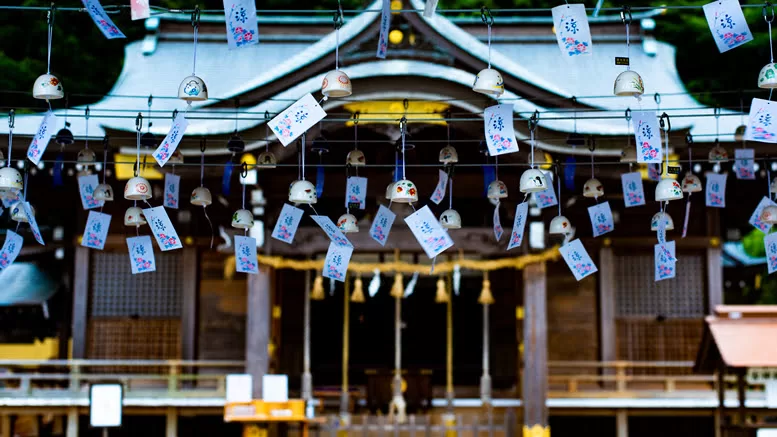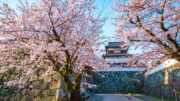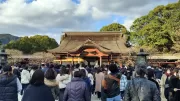 Also known as Kushida-jinja, Kushida Shrine, located in the heart of Fukuoka’s Hakata district, is one of the city’s most revered and historic Shinto shrines. Founded in 757 AD, the shrine has long been a spiritual center for the people of Fukuoka, playing a vital role in the region’s cultural and religious life. Over the centuries, Kushida Shrine has withstood the test of time, remaining a place of worship and a symbol of Fukuoka’s rich history.
Also known as Kushida-jinja, Kushida Shrine, located in the heart of Fukuoka’s Hakata district, is one of the city’s most revered and historic Shinto shrines. Founded in 757 AD, the shrine has long been a spiritual center for the people of Fukuoka, playing a vital role in the region’s cultural and religious life. Over the centuries, Kushida Shrine has withstood the test of time, remaining a place of worship and a symbol of Fukuoka’s rich history.
The shrine is particularly famous for its connection to the Hakata Gion Yamakasa Festival, one of Japan’s most vibrant and enduring festivals. Held every July, this UNESCO-recognized event dates back over 700 years and draws thousands of visitors to Fukuoka. The festival features a series of races where teams of men carry elaborately decorated floats, known as kazariyama, through the streets of Hakata. The climax of the festival is the Oiyama race, where participants dash through the city carrying one-ton floats at breakneck speed, beginning their route at Kushida Shrine. The shrine’s grounds are also home to a permanent display of a kazariyama float, giving visitors a glimpse of the festival’s grandeur year-round.
Architecturally, Kushida Shrine is a stunning example of traditional Japanese design, with intricate wood carvings, vibrant torii gates, and a serene atmosphere that belies its central urban location. The main hall, known as the honden, is dedicated to three deities: Amaterasu (the sun goddess), Susanoo (the storm god), and Ohatanushi (the god of the land). Visitors often come to the shrine to pray for good health, business success, and safe travel.
One of the shrine’s most unique features is the large ema (wooden prayer plaques) board, where visitors write their wishes and hang them up, hoping for divine blessings. Another point of interest is the large stone Otafuku mask, which symbolizes happiness and is believed to bring good fortune to those who pass through its mouth. The shrine also houses a sacred ginkgo tree, said to be over 1,000 years old, which is a popular spot for visitors to offer prayers.
Kushida Shrine is not only a place of worship but also a cultural hub that hosts various traditional events throughout the year. Beyond the Yamakasa Festival, the shrine is involved in the Setsubun festival in February, where visitors participate in bean-throwing ceremonies to drive away evil spirits and bring good luck.
Access Information
Kushida Shrine is conveniently located in central Fukuoka, making it easily accessible for visitors. The shrine is a short walk from several major transportation hubs:
- From Hakata Station: Take the Fukuoka City Subway Kuko Line (Airport Line) one stop to Gion Station. The shrine is about a 5-minute walk from Exit 2.
- From Tenjin Station: Take the Fukuoka City Subway Kuko Line two stops to Gion Station. The shrine is about a 5-minute walk from Exit 2.
- By Bus: Several local buses stop near Kushida Shrine, including those on routes 1, 4, 5, and 6. Alight at the “Kushida Jinja-mae” stop.
For those exploring the Hakata area, Kushida Shrine is also easily accessible on foot from Canal City Hakata and Nakasu, two popular nearby destinations. Whether you’re visiting for its spiritual significance, cultural events, or simply to enjoy the tranquility of its grounds, Kushida Shrine offers a unique and enriching experience in the heart of Fukuoka.




